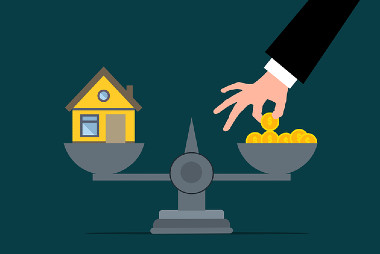If you run your business from home and have a dedicated area set aside as…
Rate rises and the effect on your cash flow
 This year may see many families struggle financially. Since May this year, the RBA has lifted cash rates from 0.1% to 0.85% amid rising inflation and costs. For an increasing number of retirees who have left the workforce with mortgage debt, that could put some strain on the household budget, and some may consider downsizing the home. With the age restriction relaxed, a new downsizer superannuation contribution rule change taking effect on 1 July, means that if you’re over the age of 60 and eligible, on the sale of your home you can contribute up to $300,000 ($600,000 for a couple), into your super.
This year may see many families struggle financially. Since May this year, the RBA has lifted cash rates from 0.1% to 0.85% amid rising inflation and costs. For an increasing number of retirees who have left the workforce with mortgage debt, that could put some strain on the household budget, and some may consider downsizing the home. With the age restriction relaxed, a new downsizer superannuation contribution rule change taking effect on 1 July, means that if you’re over the age of 60 and eligible, on the sale of your home you can contribute up to $300,000 ($600,000 for a couple), into your super.
With rising house prices across Australia pushing home ownership dreams out of reach for younger generations, particularly in the metropolitan areas, paying down a mortgage is a growing problem for those at the other end of the property ladder: retirees are increasingly leaving the workforce with mortgage debt which was not the norm among middle income Australians even 10 years ago.
According to Rachel Ong, Professor of Economics at Curtin University, between 1990 and 2015 the percentage of 55–64-year-olds who owned their home outright fell from 70 per cent to 47 per cent. During the same period, the percentage of those carrying a mortgage debt rose from 12 per cent to 31 per cent. The balance were property renters.
Brendon Coates, the economic policy program director at Grattan Institute and author of Money in Retirement: More than Enough, attributes the growing trend of people spreading the cost of buying a house over more of their lives on two factors: higher property prices that are now around 10 times the average wage compared with three to four times two decades ago. The second factor is that many Australians are delaying their entry into the property market as they save for a larger deposit over a larger timeframe, leaving fewer working years to pay down their loans.
The Australian Bureau of Statistics most recent lending indicators reveal that the average national mortgage size has increased by 18% over the past year alone to a record high of $595,568 in November 2021, with property owners in Victoria seeing the largest annual increase of 24%. With the maximum recent home loan interest rate rise of 0.85% (total of May 0.35% and June 0.50% rate rises), that would mean the average home buyer will be paying an additional $110 per month for a principal and interest loan over 25 years.
Downsizing and your Super
Considering your super’s strength in your 50’s might not be high on your to-do list, but not prioritising your super in the final decade before retirement or even semi-retirement could leave you on the back foot.
According to the Association of Superannuation Funds of Australia (ASFA) CEO Dr Martin Fahy, price increases in essentials such as petrol (up 27.3%), hospital and medical services (up 6.7%), and fruit (+4.7%) and vegetables (+5.5%) have all accelerated following supply chain disruptions from the COVID-19 pandemic and the current conflict in Ukraine, hitting retirees harder than other population groups.
The ASFA Retirement Standard says the ‘comfortable’ retirement standard for retirees aged between 65-84 who own their own home is a minimum annual cost of $45,962 for singles and $64,771 for couples. This includes items like daily essentials, private health insurance, a range of exercise and leisure activities as well as the occasional restaurant meal and some travel.
Maybe you want to review your current living arrangements and how this may impact your retirement. If you are thinking of downsizing your home, changes to the downsizer contribution rules from 1 July 2022 may now see you eligible, meaning, retirees can boost their super by contributing $300,000 ($600,000 for couples) from the sale of their home.
Some things to consider:
- The contribution is from the proceeds of the sale of a single eligible property in Australia
- Downsizer contributions aren’t tax deductible
- You have owned the property for at least 10 years prior to the sale
- You claim the capital gains tax (CGT) main residence exemption on the sale of this property (wholly or partly)
- The contribution is made within 90 days of settlement
- An election is made to treat the contribution as a downsizer contribution (either before or when the contribution is made)
- The contract for sale of the property was entered into on or after 1 July 2018; and
- You have not previously made a downsizer contribution in relation to another sale
An additional bonus is the age has been dropped from 65 to 60 years old (from 1 July 2022) to be eligible for the downsizer contribution.
Time for a health check
The rise in interest rates does not mean it’s time to panic, in fact, for many retirees the boost in Term Deposit rates could be very welcome. However, whether you’re retired or planning on retiring this might be a great opportunity to review your current financial plan to ensure you’re on the right path for you, your family, and your lifestyle.
It’s important that you refer back to your original plan and if you don’t have one, to consider putting one in place, ensuring there is some flexibility to manage any unexpected changes.
Contact our Fiducian Financial Planner if you would like advice to work through a plan and strategy that would be suitable for your life during this changing market.
Source: https://www.fiducian.com.au
Lindale Insurances Pty Ltd ATF Lindale Insurances Trust ABN 27 027 421 832 is a Franchisee of Fiducian Financial Services Pty Ltd, Level 4, 1 York Street, Sydney NSW 2000. AFSL 231103 ABN 46 094 765 134.
The information (including taxation) provided on this website is general in nature and does not consider your individual circumstances or needs. Do not act until you seek professional advice and consider a Product Disclosure Statement.
Disclaimer: The views expressed in this publication are solely those of the author; they are not reflective or indicative of Fiducian. They cannot be reproduced in any form without the express written consent of the author.



